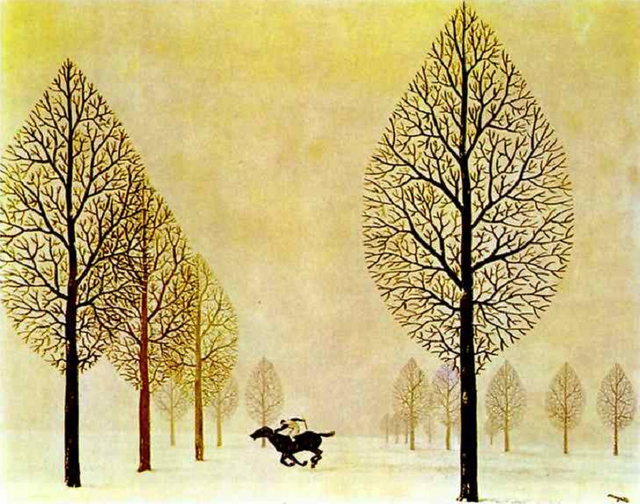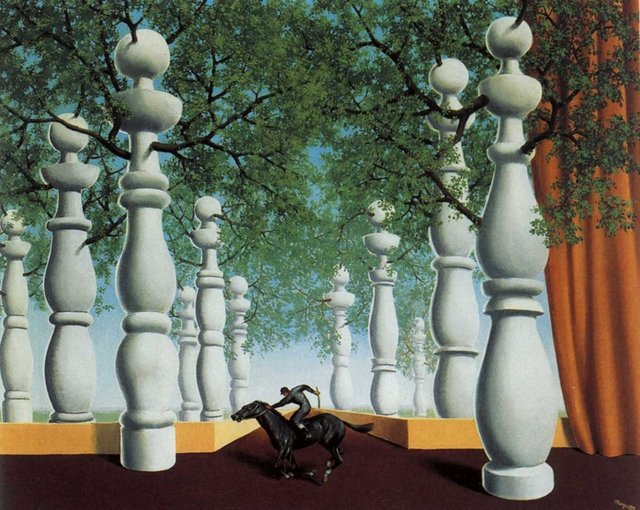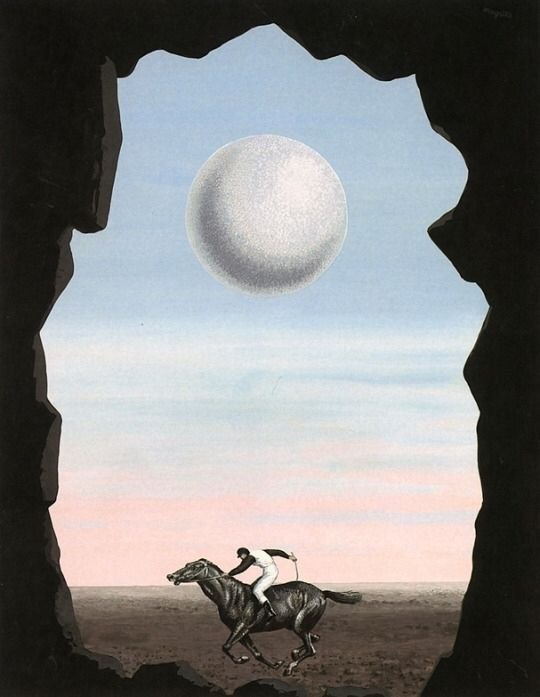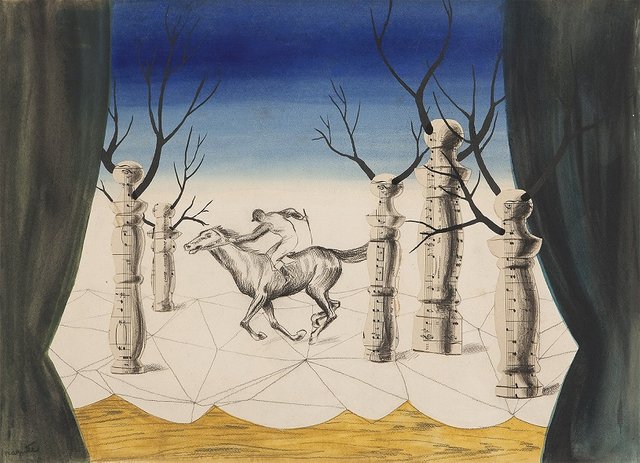[ART ANALYSIS] The Lost Jockey (1948) by René Magritte
I have rarely been able to muster much enthusiasm for the Surrealist movement other than in a purely theoretical and philosophical sense, where it certainly is fascinating. In practice it often leaves me cool. I can reach a moment of inspiration when I see a surrealist painting for the first time, in the same way that I can be fascinated by an unexpected idea. But the poetic depth that these artists were aiming at is usually lost on me. An artist like Dalí for instance; while technically brilliant, most of his paintings feel clinical, empty and drained of passion to me.
An example of a surrealist painting that actually manage to affect me on a deeper level is The Invention of Life (see my analysis of it here) by Belgian surrealist René Magritte (1898-1968).

Another one is The Lost Jockey from 1948, a gouache on paper, also by Magritte. We see a desolate winter landscape with drop shaped trees that all look the same. The tree crowns are leafless and the atmosphere yellow-brown. Is it a poisoned world we are viewing? In the foreground we see a jockey that seems to have has gone astray from the racecourse, and incessantly continues into the unknown like a mechanical toy. The contrast between stillness and dynamism - the speed of the horse and jockey and the stillness of the dead landscape - is very interesting and striking. I also experience the kind of confusion that doesn't come from new and strange places - but from a landscape where everything is confusingly similar; the deserted plains, or days that are so similar that they aren't discernible; the horrifying revelation of becoming blind to your own surroundings: the rooms, the neighborhood, the daily view of the landscape - everything that habit has put its deafening hand over. Another one of those paintings that probably says more about the individual spectator than anything else - a mirror of the soul and the dark side of consciousness.




This post has been ranked within the top 25 most undervalued posts in the second half of Dec 25. We estimate that this post is undervalued by $9.53 as compared to a scenario in which every voter had an equal say.
See the full rankings and details in The Daily Tribune: Dec 25 - Part II. You can also read about some of our methodology, data analysis and technical details in our initial post.
If you are the author and would prefer not to receive these comments, simply reply "Stop" to this comment.
Wonderful and interesting piece you have written here. As an artist myself I am also interested in art history but I confess I do not know so much about Magritte being more taken with Rothko. Thus I had not seen this work of the Jockey and I find your analysis of it quite beautiful and thought provoking. I agree, of all the versions the first one painted rather simply is definitely the most powerful on the eye at least. Simplicity is often the most effect way of getting a message or view across. I find the image quite hypnotic and once see is difficult to get out of your head, a feat not easily achieved. As well as your interesting view I also see a someone who is perhaps fleeing from a world of desolation with the jockey representing the speed of which this person wished to escape. Perhaps if Magritte were alive today he might repaint it using a jet airplane. Thank you for introducing me to this wonderful piece I have gained and learned a new appreciation of this artists and will further contemplate on what this image might mean as this was just my initial response. Upvoted. I look forward to seeing more of your posts if they are as good as this one. Meaning I now will "follow" you. Cheers!
Thanks for the comment!
Yes, perhaps it's even somewhat of a vanitas image; maybe he's vainly attempting to escape death - death which is represented by the desolate landscape? I think it has something to do with alienation and being misplaced / out of context also. There are many ways of looking at it :) Rothko is one of my favorite artists btw, I might do a piece on him.
Ah yes of course, running away from death would make perfect sense. Well spotted. Oh yes please do one on Rothko I would look forward to that with glee. It is a long time since I have so much enjoyed reading an analysis of an art work and I mean that sincerely. I love art history and have read many books on the subject but many writers tend to be somewhat over clinical forgetting to mention the feeling. You have a writing style there that is rather appealing regards to this as well as thought provoking and educational. You have a gift there and one I feel is perhaps missing from the art world at the moment. Everyone has become so focused on the value of art, the high prices I mean, that they have almost lost touch with the gift that art is in our lives, if you get my meaning? So glad I have discovered you by joining this platform. Look forward to your next post and thanks for the reply!
Thank you so much for your kind words, it means a lot!
cool
good blog
The original idea! Cool art in my opinion!